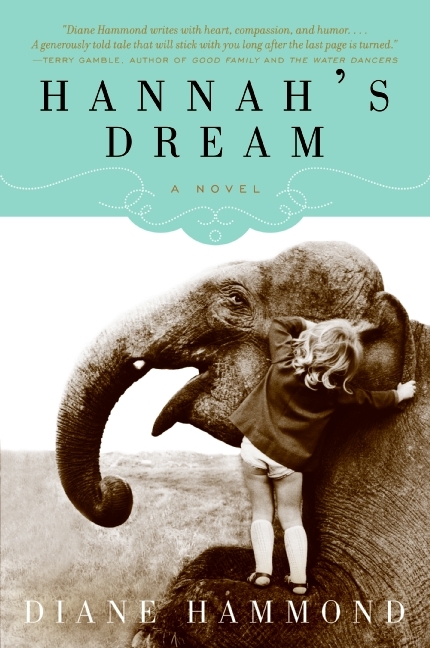
HANNAH’S DREAM
For forty-one years, Samson Brown has been caring for Hannah, the lone elephant at the down-at-heel Max L. Biedelman Zoo. Having vowed not to retire until an equally loving and devoted caretaker is found to replace him, Sam rejoices when smart, compassionate Neva Wilson is hired as the new elephant keeper. But Neva quickly discovers what Sam already knows: that despite their loving care, Hannah is isolated from other elephants, and her feet are nearly ruined from standing on hard concrete all day. Using her contacts in the zookeeping world, Neva and Sam hatch a plan to send Hannah to an elephant sanctuary—just as the zoo’s angry,
For forty-one years, Samson Brown has been caring for Hannah, the lone elephant at the down-at-heel Max L. Biedelman Zoo. Having vowed not to retire until an equally loving and devoted caretaker is found to replace him, Sam rejoices when smart, compassionate Neva Wilson is hired as the new elephant keeper. But Neva quickly discovers what Sam already knows: that despite their loving care, Hannah is isolated from other elephants, and her feet are nearly ruined from standing on hard concrete all day. Using her contacts in the zookeeping world, Neva and Sam hatch a plan to send Hannah to an elephant sanctuary—just as the zoo’s angry, unhappy director launches an aggressive revitalization campaign that spotlights Hannah as the star attraction, inextricably tying Hannah’s future to the fate of the Max L. Biedelman Zoo.
A charming, poignant, and captivating novel certain to enthrall readers of Water for Elephants, Diane Hammond’s Hannah’s Dream is a beautifully told tale rich in heart, humor, and intelligence.
- Harper Paperbacks
- Paperback
- September 2008
- 336 Pages
- 9780061568251
About Diane Hammond
Diane Hammond, the author of two previous novels, Going to Bend and Homesick Creek, is the recipient of an Oregon Arts Commission literary fellowship and served as a spokesperson for the Free Willy Keiko Foundation and the Oregon Coast Aquarium. She lives in Bend, Oregon, with her husband and daughter.
Praise
“Hammond’s language is spare and beautiful.” —Seattle Times
“Hammond [writes] clean prose, pitch-perfect dialogue, and [has a] keen eye for social detail.”
—Boston Globe
“Hammond is a gifted writer, and the descriptions she uses get to something deep within a character in a few words.” —Portland Oregonian
Discussion Questions
Several characters in Hannah’s Dream have or are given mixed, scrambled or multiple identities. Harriet, for instance, takes on the persona of Max Biedelman. Which other characters have identity issues, and why?
Sam and Max Biedelman develop a deep friendship. On what do the uneducated black zookeeper and worldly old woman base their relationship? Would their relationship be different if they had met today? Or under different circumstances?
Animals both large and small play key roles in the lives of the characters in Hannah’s Dream. Why are they so important to their owners and keepers? In what ways are the various animal/human relationships similar, and in what what ways are they different?
Why, at the end of the book, does Corinna begin to re-examine her relationship with God?
Will Sam and Corinna ever travel to the Pachyderm Sanctuary to visit Hannah?
Every character in this book (with the possible exception of Johnson Johnson) has been permanently altered or even defined by one essential event, calamity or crisis. In what ways do these personal histories allow the various characters to understand, and sympathize with, other characters – even if their secrets remain secret?
Harriet Saul is initially portrayed as the villain in Hannah’s Dream, but does she deserve it? Did she change over the course of the book, and if so, how? Why?
What’s the deal with Johnson Johnson? Is he a savant, a fool, or a genius?
Sam and Corinna treat Hannah as the reincarnation of their stillborn daughter. Do they mean this literally or figuratively?
Neva Wilson describes Hannah as a “charismatic mega-vertebrate,” a description that also includes whales, dolphins and other large and popular mammals. Do these animals have a place in today’s zoos? Why?
